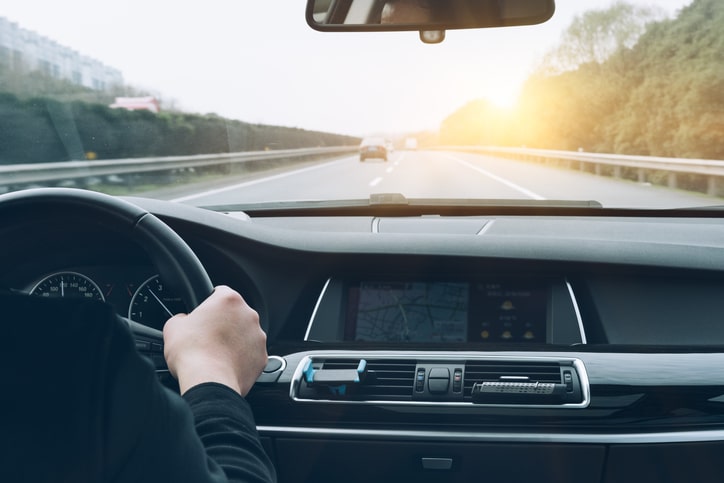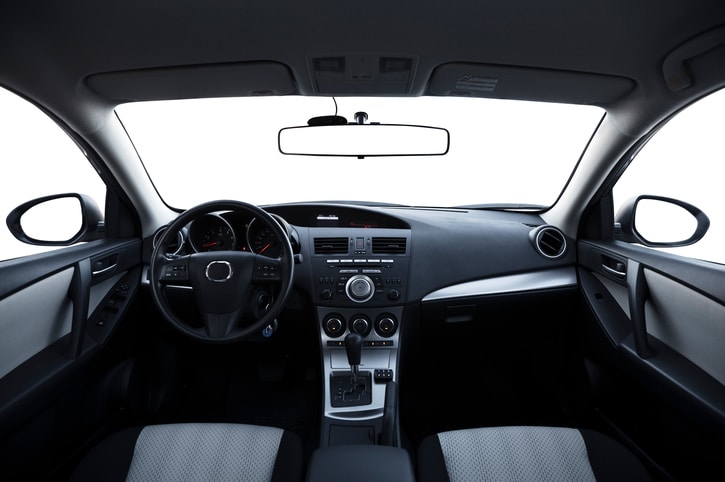On an average family saloon, there are typically three vertical support pillars, known as A, B and C pillars, located at the front, middle and rear of the vehicle. Larger automobiles, such as estate cars, may even have a fourth, known as a D pillar.
The main design function of these pillars is to provide extra reinforcement to the windscreen, roof and rear window, as well as improving the overall structural integrity of the car. The A-pillars, often referred to as windscreen pillars, are the upright stanchions that frame your windscreen. As well as adding extra support to the front end of the vehicle, they also hold the windscreen in place.
- How have windscreen pillars changed over the years?
- Do windscreen pillars cause accidents?
- Where is the blind spot that is created by windscreen pillars?
- How can I avoid an accident?
- What does the future hold for windscreen pillars?
How Have Windscreen Pillars Changed Over the Years?
As modern cars have become increasingly robust in order to meet stricter safety guidelines, windscreen pillars have become stronger and wider to accommodate the extra weight. Take the ever-popular Volkswagen Golf. Early models weighed in at a modest 805kg, whereas today’s seventh-generation 2.0 litre TDI is a massive one and half tonnes. This is good news for drivers, with a steep decline in fatalities over the last 20 years.
Do Windscreen Pillars Cause Accidents?
In the past few years, windscreen pillars have made big headlines in the automotive press, with some experts blaming new designs for recent road traffic accidents.
While the jury’s still out, the fact is that expanding windscreen pillars have created a new, extremely dangerous blind spot, making it harder for drivers to see other road users at pedestrian crossings, T-junctions and roundabouts. And some vehicles are worse than others, with vans and 4x4s often the biggest culprits. One study, carried out by the MIRA (motor industry research association) discovered that the Ford Transit had a huge 6.4-metre blind spot created by its A-pillars – large enough to obscure two motorcycles.
But it’s not just the big boys who are at fault. The windscreen pillars of a Ford Fiesta are almost twice the width they were 20 years ago, and a recent government study found that separate accidents involving a Ford Ka, a Vauxhall Corsa, and a Renault Clio could all be attributed to blind spots caused by the cars’ larger frames.
Where Is the Blind Spot That Is Created by Windscreen Pillars?
So, where is this blind spot, and how can it affect the way we drive?
A-pillar blind spots can obscure objects approaching diagonally from either side of your vehicle, with the problem often worse on the driver’s side, particularly when you’re turning right. Pedestrian crossings, roundabouts and T-junctions can be particularly hazardous, and, because the blind spot affects a relatively narrow field of vision, it tends to be less conspicuous road users, such as cyclists and motorbike riders who are at risk. In fact, in extreme cases, on a curved road or roundabout, a motorbike travelling at a similar speed can be obscured by your A pillar for a substantial distance without you ever noticing, right up to the point of impact.
How Can I Avoid an Accident?
The short answer is: be vigilant. The number one cause of accidents on our roads is driver error or reaction – a factor in a whopping 65% of cases investigated by UK police. And top of the charge sheet: ‘failing to look properly’. Hardly surprising then that the extra blind spots on modern cars should lead to more incidents. With that in mind, here are few simple tips to avoid the unthinkable:
- Familiarise yourself with your windscreen pillars. Next time you use your vehicle, take a few moments to actually look at them properly before you set off. Check how much of your surroundings are obscured, and think about how it might impede your vision once you hit the road.
- Slow down and take your time. Approaching junctions a little slower gives you more time to take in your surroundings and spot potential hazards such as oncoming vehicles and people.
- Always look twice. When you’re approaching a pedestrian crossing or a roundabout, or you’re at a T-junction, be sure to look at least twice before moving off so you’re confident there’s nothing you’ve missed.
- Look both ways, and look again. It’s not just your right-hand windscreen pillar that could be impeding your view, so make sure your passenger side is clear too before hitting the accelerator.
- Look around your pillars. Lean forward in your seat, crane your neck and look around your window pillars to make certain the coast is clear.
- Think small. Smaller drivers are often affected more than most, as their driving position is likely to be closer to the windscreen, making it even harder to see around the pillars. So, if you’re short in stature be sure to be extra vigilant.
- Keep your windscreen clean. Blind spots can be compounded by damaged or dirty glass and dazzle from the sun, so make sure your windscreen’s free of cracks and chips, and get yourself a quality screenwash.
What Does the Future Hold for Windscreen Pillars?
Some progress has been made in recent years to reach a balance between driver safety and an improved field of vision, but perhaps the biggest change is in public awareness. Just knowing the blind spot exists is a huge leap forward, and, as well as the greater publicity this issue has received in the press, A-pillar blind spots now form part of the driving theory test, with a whole new generation of drivers learning to be more aware of their surroundings.
It’s even possible that in the next few years windscreen pillar blind spots will be a thing of the past, with most major car manufacturers working towards a hi-tech solution.
In 2014, Jaguar Land Rover announced plans to introduce invisible pillars as standard across its range, banishing blind spots once and for all, giving drivers an unobstructed 360˚ field of vision. This so-called smart windscreen uses cameras embedded in the pillars to give the driver a live picture of what’s going on outside the car, highlighting potential hazards such as pedestrians, cyclists and approaching vehicles.
More recently, Toyota threw its hat into the ring, announcing a brand-new initiative using a patented cloaking device. And, while this sounds like something out of a bad science fiction novel, the process is actually relatively simple, using a series of strategically placed mirrors to make the A-pillars appear transparent.
While much of this technology is still some years away, with the increase in car technology and manufacturers coming up with new innovations all the time, surely it won’t be long before windscreen pillar blind spots are gone forever.
At Prestone, we’re committed to helping you and your car excel on the road. Visit the homepage to find out more and browse our complete product range today.

